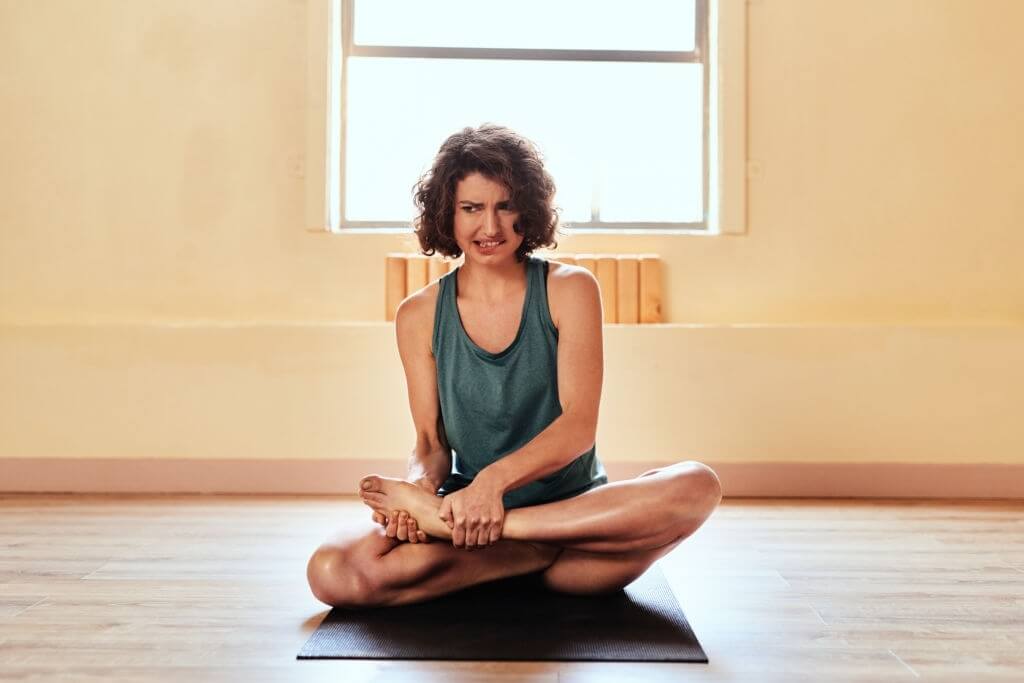With the popularity of Yoga, the number of yoga practitioners in the world is increasing rapidly. Some yoga practitioners try to acquire the expertise in challenging and impressive yoga asanas very quickly. It is easy to forget the core message of ancient yoga practice as it is much more than shaping the body. Yoga is a scientifically developed form of movement invented to heal our entire being. But, like practicing exercises at the Gym, it is easy to get common injuries even while practicing common and simple yoga asana.

The main emphasis of this article is not to scare new yoga practitioners who are interested in experimenting with challenging yoga asanas. We want to make yoga practitioners aware that common yoga injuries can be avoided by taking some prevention. During your yoga practice, if you ever feel anything that is not serving you, or doing more harm than good, then it’s important to respect those physical limitations telling you to back off. Our body is one of our greatest teachers. If we listen to our bodies and understand our physical limitations, we can easily avoid getting injured during our Yoga practices.
Here are some common injuries that can occur during our yoga practices:
- Wrist Strain or Wrist Pain – While yoga-practicing, a lot of moments are done through the wrist, so wrist pain is very common in yoga. But, if it is neglected, then it can be converted into serious sprains and cartilage depletion. Sometimes, when we do downward moments improperly, it can be stressful on the delicate joints that connect our hand to forearm. To prevent your wrist pain, you need to spread your fingers equally like sea star so that the pressure and weight are divided equally between each finger and the palm.
If you feel wrist pain anytime during your yoga practice then avoid such yoga asanas that are weight-bearing on your hands. Wrist rotations are a must-do before beginning your main asana practice.
- Rib Strain – When you twist your body, strains and injuries to your ribs can be occurred. If the twists are improperly, you can experience pain at the intercostal muscles situated between your ribs. When making a twist, try to elongate your spine first correctly. The straighter your spine is, the better you can twist.
- Elbow Irrigation – When you perform chaturanga asana with an incorrect alignment or without proper warm-up, it can stress your elbow joint as well as wrist. You might be practicing this asana for a long time without realizing that it’s the wrong way to practice.
To avoid elbow irrigation or elbow injury, you need to make sure that you round-up your elbows to your side body. It might be difficult to do in this way but as you practise, it will become easy and your elbow will be safe.
- Neck Pain – If you are practising inversions (headstands) for the first time, there is a higher chance of putting too much pressure on the neck due to incorrect placement. It can cause an issue on the neck joints or absence of neck flexion.
While practicing headstands, you need to put most of your weight on your arms and shoulders. You need to minimize the weight pressure on your neck. Hence, neck tensions and injuries can be easily prevented.
- Lower back Injury – It is important to be aware about your spine, and you need to make sure that you are not rounding it. When you do it, it exerts pressure on the spine and leads to lower back injury. Every time you inhale, you need to lengthen your spine and fold it with each exhale.
Another cause is to forcing backbends or practicing it incorrectly. When your knees splay out in wheel pose, it can cause compression in your lower back and leads to irritation and more serious injury. So, focus on back-straightening asanas for more flexible balancing backbends.
- Shoulder Injuries – The higher chances of shoulder injuries occur when you raise your shoulders towards your ears in specific poses. It leads to muscle injury due to excessive stretching.
- Hamstring Tears – Weak & tight hamstring are the result of over-sitting, over-pulling or overstretching. It occurs when you stretch your body part without knowing how weak those muscles might be. During your yoga practice, you need to balance your forward folds. You have to warm-up your glutes before you open your hips. And the final master key is – Don’t force any uncomfortable moment during your yoga practice.
- Hip Overextension – In yoga practice, various moments require the use of the hips, so it is easy to overextend them. It leads to the tearing of the muscles of the inner thighs or the groin area.
Best ways to prevent Yoga Injuries –
A common saying is – ‘Prevention is better than cure.’ So, if we make ourselves aware of these injuries and use some precaution tips, we can avoid them. Follow these tips in order to avoid the injuries-
- Do Warm-up Exercises before you start as it prepares the body for more challenging moments.
- User Gears, Pops, and other equipment for not pushing the body as it helps to get the feel of specific yoga pose.
- Respect your physical limitation and do not attempt advanced poses just for the sake of your ego
Search a right Teacher or Mentor
This is one of the challenging parts as finding the right mentor is quite difficult. There are two ways – either you find a person near your location or you can enroll in a quality yoga teacher training program with a reputed Yoga School or Yoga Studio. There are higher chances to get the right mentor at these places because most of the yoga schools and studios are associated with Certified Yoga teachers or professionals to mentor the new yoga practitioners and you get the well-trained yoga community to provide support after completing the course.





Leave A Comment